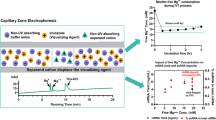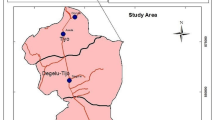Abstract
Food ingredient adulteration, especially the adulteration of milk and dairy products, is one of the important issues of food safety. A rapid, simple, sensitive, specific, and low-cost DNA detection method was established to screen bovine milk adulterated in three different kinds of special milk (camel, horse, and goat milk). This method can detection both bovine milk and special milk in a single duplex polymerase chain reaction (duplex PCR). In this study, specific primers of duplex PCR were designed based on 16S-RNA genes from camel and bovine mitochondria and D-LOOP genes from horse and goat mitochondria. The designed primers had good specificity and could accurately amplify the target fragments (711 bp, 584 bp, 241 bp, and 184 bp). The duplex PCR was applied to the binary mixtures of raw milk fixed percentage and processed dairy products (freeze-dried, pasteurized, and ultra-high temperature (UHT) sterilized with the same mixtures and commercial samples). The limit of detection (LOD) of special milk adulterated with bovine milk was 0.1% in raw milk mixture. Pasteurized and UHT sterilized raised the LOD to 0.2% and 0.5%, but freeze-dried did not raise the LOD. Duplex PCR maintained preferable selectivity and sensitivity in the detection of samples with different processed, and it is expected to be used in market detection.




Similar content being viewed by others
References
Abdel-Rahman SM, Elmaghraby AM, Haggag AS (2015) Fast and sensitive determination of camel’s and goat’s meat and milk using species-specific genetic markers. Biotechnol Anim HusbandryBiotehnol Stoc 31:415–423. https://doi.org/10.2298/bah1503415a
Agrimonti C, Pirondini A, Marmiroli M, Marmiroli N (2015) A quadruplex PCR (qxPCR) assay for adulteration in dairy products. Food Chem 187:58–64. https://doi.org/10.1016/j.foodchem.2015.04.017
Alichanidis E, Moatsou G, Polychroniadou A (2016) Composition and properties of non-cow milk and products. Elsevier Inc.
Azad T, Ahmed S (2016) Common milk adulteration and their detection techniques. Int J Food Contam 3:21–29. https://doi.org/10.1186/s40550-016-0045-3
Ballin NZ, Vogensen FK, Karlsson AH (2009) Species determination - can we detect and quantify meat adulteration? Meat Sci 83:165–174. https://doi.org/10.1016/j.meatsci.2009.06.003
Bánáti D (2011) Consumer response to food scandals and scares. Trends Food Sci Technol 22:56–60. https://doi.org/10.1016/j.tifs.2010.12.007
Barbano DM, Rasmussen RR, Lynch JM (1991) Influence of milk somatic cell count and milk age on cheese yield. J Dairy Sci 74:369–388. https://doi.org/10.3168/jds.S0022-0302(91)78179-4
Benabdelkamel H, Masood A, Alanazi IO, Alzahrani DA, Alrabiah DK, Alyahya SA, Alfadda AA (2017) Proteomic profiling comparing the effects of different heat treatments on camel (Camelus dromedarius) milk whey proteins. Int J Mol Sci 18:1–15. https://doi.org/10.3390/ijms18040721
Chamberlain JS, Gibbs RA, Rainer JE, Nguyen PN, Thomas C (1988) Deletion screening of the duchenne muscular dystrophy locus via multiplex DNA amplification. Nucleic Acids Res 16:11141–11156. https://doi.org/10.1093/nar/16.23.11141
Cozzolino R, Passalacqua S, Salemi S, Malvagna P, Spina E, Garozzo D (2001) Identification of adulteration in milk by matrix-assisted laser desorption/ionization time-of-flight mass spectrometry. J Mass Spectrom 36:1031–1037. https://doi.org/10.1002/jms.206
Di Pinto A, Terio V, Marchetti P, Bottaro M, Mottola A, Bozzo G, Bonerba E, Ceci E, Tantillo G (2017) DNA-based approach for species identification of goat-milk products. Food Chem 229:93–97. https://doi.org/10.1016/j.foodchem.2017.02.067
Eugene DR, Ronald W (1998) Mitochondrial-DNA molecules and virtual number of mitochondria per cell in mammalian-cells. J Cell Physiol 136:507–513
Golinelli LP, Carvalho AC, Casaes RS, Lopes CSC, Deliza R, Paschoalin VMF, Silva JT (2014) Sensory analysis and species-specific PCR detect bovine milk adulteration of frescal (fresh) goat cheese. J Dairy Sci 97:6693–6699. https://doi.org/10.3168/jds.2014-7990
Gonçalves J, Pereira F, Amorim A, Van Asch B (2012) New method for the simultaneous identification of cow, sheep, goat, and water buffalo in dairy products by analysis of short species-specific mitochondrial DNA targets. J Agric Food Chem 60:10480–10485. https://doi.org/10.1021/jf3029896
Guo L, Ya M, Hai X, Guo YS, Li CD, Chun D, Xu WL, Liao CS, Feng W, Cai Q (2019) A simultaneous triplex TaqMan real-time PCR approach for authentication of caprine and bovine meat, milk and cheese. Int Dairy J 95:58–64. https://doi.org/10.1016/j.idairyj.2019.03.004
Hazra T, Sharma V, Sharma R, Arora S (2018) PCR based assay for the detection of cow milk adulteration in buffalo milk. Indian J Anim Res 52:383–387. https://doi.org/10.18805/ijar.11331
Herzallah SM, Humeid MA, Al-Ismail KM (2010) Effect of heating and processing methods of milk and dairy products on conjugated linoleic acid and trans fatty acid isomer content. J Dairy Sci 88:1301–1310. https://doi.org/10.3168/jds.s0022-0302(05)72796-x
Kemal Seçkin A, Yilmaz B, Tosun H (2017) Real-time PCR is a potential tool to determine the origin of milk used in cheese production. LWT Food Sci Technol 77:332–336. https://doi.org/10.1016/j.lwt.2016.11.065
Klančnik A, Toplak N, Kovač M, Ogrinc N, Jeršek B (2016) Robust PCR-based method for quantification of bovine milk in cheeses made from caprine and ovine milk. Int J Dairy Technol 69:540–549. https://doi.org/10.1111/1471-0307.12287
Lee SJ, Sherbon JW (2002) Chemical changes in bovine milk fat globule membrane caused by heat treatment and homogenization of whole milk. J Dairy Res 69:555–567. https://doi.org/10.1017/S002202990200571X
LeJeune JT, Rajala-Schultz PJ (2009) Unpasteurized milk: a continued public health threat. Clin Infect Dis 48:93–100. https://doi.org/10.1086/595007
Liao J, Liu YF, Ku T, Liu MH, Huang Y (2017a) Qualitative and quantitative identification of adulteration of milk powder using DNA extracted with a novel method. J Dairy Sci 100:1657–1663. https://doi.org/10.3168/jds.2016-11900
Liao J, Liu YF, Yang L, Li FP, Sheppard AM (2017b) Development of a rapid mitochondrial DNA extraction method for species identification in milk and milk products. J Dairy Sci 100:7035–7040. https://doi.org/10.3168/jds.2017-12653
Liao J, Yang L, Sheppard AM, Liu YF (2017c) Comparison of DNA quality in raw and reconstituted milk during sterilization. J Dairy Sci 101:147–153. https://doi.org/10.3168/jds.2017-13461
Liao J, Liu Y, Ku T (2018) Changes in physicochemical properties and DNA quality of milk as affected by different heat treatments. Int J Dairy Technol 71:333–339. https://doi.org/10.1111/1471-0307.12446
Lipkin E, Shalom A, Khatib H, Soller M, Friedmann A (2010) Milk as a source of deoxyribonucleic acid and as a substrate for the polymerase chain reaction. J Dairy Sci 76:2025–2032
Medeiros GKVV, Queiroga RCRE, Costa WKA, Gadelha CAA, e Lacerda RR, JTJG L, Pinto LS, Braganhol E, Teixeira FC, Paula PP, Campos MIF, Gonçalves GF, Pessôa HLF, Gadelha TS (2018) Proteomic of goat milk whey and its bacteriostatic and antitumour potential. Int J Biol Macromol 113:116–123. https://doi.org/10.1016/j.ijbiomac.2018.01.200
Moore JC, Spink J, Lipp M (2012) Development and application of a database of food ingredient fraud and economically motivated adulteration from 1980 to 2010. J Food Sci 77. https://doi.org/10.1111/j.1750-3841.2012.02657.x
Mousavi SM, Jahed Khaniki G, Eskandari S, Maryam R, Mirab Samiee S, Mehdizadeh M (2015) Applicability of species-specific polymerase chain reaction for fraud identification in raw ground meat commercially sold in Iran. J Food Compos Anal 40:47–51. https://doi.org/10.1016/j.jfca.2014.12.009
Nardiello D, Natale A, Palermo C, Quinto M, Centonze D (2018) Milk authenticity by ion-trap proteomics following multi-enzyme digestion. Food Chem 244:317–323. https://doi.org/10.1016/j.foodchem.2017.10.052
Naveena BM, Jagadeesh DS, Jagadeesh Babu A, Madhava Rao T, Kamuni V, Vaithiyanathan S, Kulkarni VV, Rapole S (2017) OFFGEL electrophoresis and tandem mass spectrometry approach compared with DNA-based PCR method for authentication of meat species from raw and cooked ground meat mixtures containing cattle meat, water buffalo meat and sheep meat. Food Chem 233:311–320. https://doi.org/10.1016/j.foodchem.2017.04.116
Ng-Kwai-Hang KF, Hayes JF, Moxley JE, Monardes HG (1984) Variability of test-day milk production and composition and relation of somatic cell counts with yield and compositional changes of bovine milk. J Dairy Sci 67:361–366. https://doi.org/10.3168/jds.S0022-0302(84)81309-0
Nixon GJ, Wilkes TM, Burns MJ (2015) Development of a real-time PCR approach for the relative quantitation of horse DNA. Anal Methods 7:8590–8596. https://doi.org/10.1039/c5ay01867f
Petzer I-M, Karzis J, Donkin EF, Webb EC, Etter EMC (2017) Somatic cell count thresholds in composite and quarter milk samples as indicator of bovine intramammary infection status. Onderstepoort J Vet Res 84:1–10. https://doi.org/10.4102/ojvr.v84i1.1269
Psifidi A, Dovas CI, Banos G (2010) A comparison of six methods for genomic DNA extraction suitable for PCR-based genotyping applications using ovine milk samples. Mol Cell Probes 24:93–98. https://doi.org/10.1016/j.mcp.2009.11.001
Ren QR, Zhang H, Guo HY, Jiang L, Tian M, Ren FZ (2014) Detection of cow milk adulteration in yak milk by ELISA. J Dairy Sci 97:6000–6006. https://doi.org/10.3168/jds.2014-8127
Rodrigues NPA, Givisiez PEN, Queiroga RCRE, Azevedo PS, Gebreyes WA, Oliveira CJB (2012) Milk adulteration: detection of bovine milk in bulk goat milk produced by smallholders in northeastern Brazil by a duplex PCR assay. J Dairy Sci 95:2749–2752. https://doi.org/10.3168/jds.2011-5235
Shariatikia M, Behbahani M, Mohabatkar H (2017) Anticancer activity of cow, sheep, goat, mare, donkey and camel milks and their caseins and whey proteins and in silico comparison of the caseins. Mol Biol Res Commun 6:57–64. https://doi.org/10.22099/mbrc.2017.4042
Sharma V, Hazra T, Kandhol R, Rekha S, Arora S (2018) Confirmation of buffalo tallow in anhydrous cow milk fat using gas liquid chromatography in tandem with species-specific polymerase chain reaction. Int J Dairy Technol 71:158–163. https://doi.org/10.1111/1471-0307.12390
Singh P, Gandhi N (2015) Milk preservatives and adulterants: processing, regulatory and safety issues. Food Rev Int 31:236–261. https://doi.org/10.1080/87559129.2014.994818
Šnirc M, Fekete T, Belej Ľ, Židek R, Golian J, Haščík P, Zajác P, Čapla J (2017) Detection of ovine milk adulteration using taqman real-time pcr assay. Potravin Slovak J Food Sci 11:338–343
Thanakiatkrai P, Kitpipit T (2017) Meat species identification by two direct-triplex real-time PCR assays using low resolution melting. Food Chem 233:144–150. https://doi.org/10.1016/j.foodchem.2017.04.090
Tortorici L, Di Gerlando R, Tolone M, Mastrangelo S, Sardina MT (2016) 12S rRNA mitochondrial gene as marker to trace Sicilian mono-species dairy products. Livest Sci 193:39–44. https://doi.org/10.1016/j.livsci.2016.09.015
Volk H, Klančnik A, Toplak N, Kovač M, Jeršek B (2014) Real-time PCR detection of fraudulent addition of bovine milk to caprine and ovine milk. J Hyg Eng Des:107–111
Yadav AK, Kumar R, Priyadarshini L, Singh J (2015) Composition and medicinal properties of camel milk: a review. Asian J Dairy Food Res 34:83. https://doi.org/10.5958/0976-0563.2015.00018.4
Yang J, Dou Z, Peng X, Wang H, Shen T, Liu J, Li G, Gao Y (2018) Transcriptomics and proteomics analyses of anti-cancer mechanisms of TR35–an active fraction from Xinjiang Bactrian camel milk in esophageal carcinoma cell. Clin Nutr. https://doi.org/10.1016/j.clnu.2018.10.013
Funding
This study was funded by projects of the National Natural Science Foundation of China (31471645) and program of Key Research and Development Projects in Xinjiang province (2018B01003).
Author information
Authors and Affiliations
Contributions
Lu Deng and Aili Li were responsible for the acquisition, analysis, and interpretation of data for the work. Yang Gao and Rongrong Li were responsible for revising it critically for important intellectual content. Tong Shen and Haitao Yue were responsible for the conception or design of the work. Jing Miao was responsible for drafting the work for important intellectual content. Jie Yang agreed to be accountable for all aspects of the work in ensuring that questions related to the accuracy or integrity of any part of the work are appropriately investigated and resolved.
Corresponding author
Ethics declarations
Conflict of Interest
Lu Deng declares that she has no conflict of interest. Aili Li declares that she has no conflict of interest. Yang Gao declares that he has no conflict of interest. Tong Shen declares that she has no conflict of interest. Haitao Yue declares that he has no conflict of interest. Jing Miao declares that she has no conflict of interest. Rongrong Li declares that she has no conflict of interest. Jie Yang declares that she has no conflict of interest.
Ethical Approval
This article does not contain any studies with human participants or animals performed by any of the authors.
Informed Consent
Informed consent was obtained from all individual participants included in the study.
Additional information
Publisher’s Note
Springer Nature remains neutral with regard to jurisdictional claims in published maps and institutional affiliations.
Electronic supplementary material
ESM 1
(DOCX 19 kb)
Rights and permissions
About this article
Cite this article
Deng, L., Li, A., Gao, Y. et al. Detection of the Bovine Milk Adulterated in Camel, Horse, and Goat Milk Using Duplex PCR. Food Anal. Methods 13, 560–567 (2020). https://doi.org/10.1007/s12161-019-01678-2
Received:
Accepted:
Published:
Issue Date:
DOI: https://doi.org/10.1007/s12161-019-01678-2




